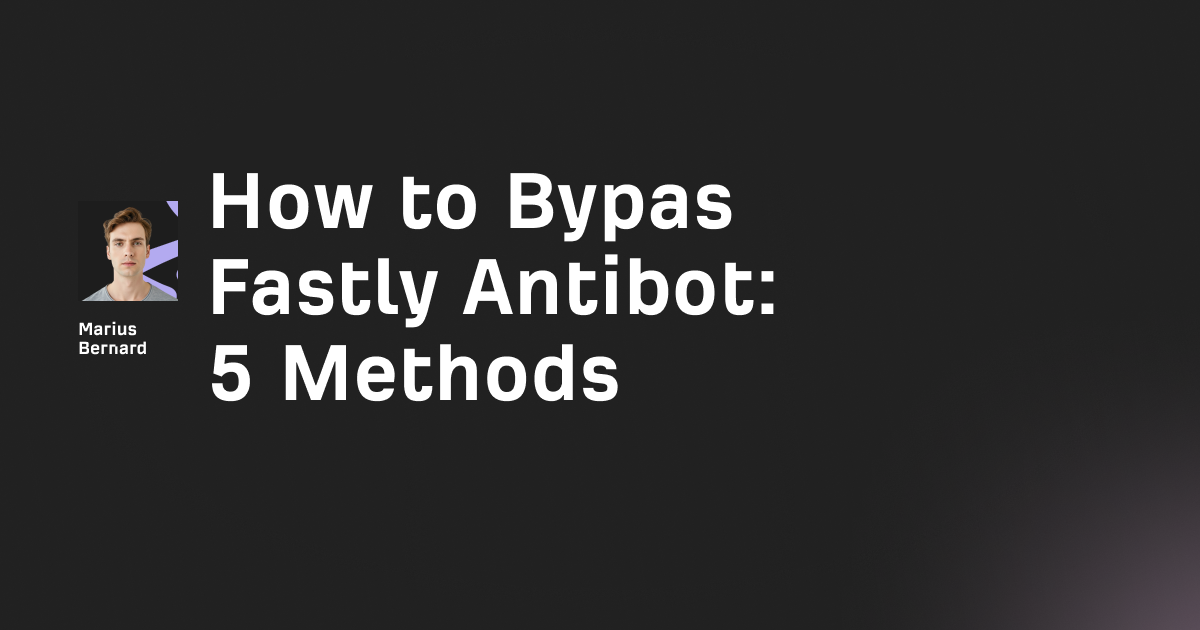Ever tried to run a competitor analysis or scrape some public SEO data—only to get hit with a 403 error or blocked altogether?
Frustrating, right?
As more businesses rely on scraping for research, websites are getting smarter about blocking bots. Proxy detection isn’t just about IP bans anymore—it’s layered, smart, and pretty relentless.
But here’s the good news: if you’re doing legit work—like market research, SERP tracking, or content gap analysis—there are ethical and effective ways to get the data you need.
I’ve tested dozens of them. Here’s what’s actually working in 2025.
1. Understand how modern proxy detection works
Before we get into solutions, it helps to know what you’re up against.
Proxy detection in 2025 isn’t just about banning IPs from AWS. Sites now use a stack of methods to detect and block bots.
Here’s a quick breakdown.
IP reputation still matters
Sites often block IPs from known datacenters or ones flagged for suspicious activity. If your IP is sending hundreds of requests a minute, you’ll probably get flagged—fast.
# Pseudo-code for how websites flag suspicious IPs
def check_ip_reputation(ip):
if is_datacenter_ip(ip) or is_rate_too_high(ip) or is_on_blocklist(ip):
return "block"
return "allow"
Browser fingerprinting is everywhere now
This is the sneaky one.
Even if you rotate your IP, websites can still detect your browser setup: fonts, screen resolution, canvas fingerprinting, time zone, extensions, etc. Combine all of that, and you’ve got a fingerprint that’s (almost) as unique as you are.
Fingerprinting tech from Cloudflare and PerimeterX has gotten very good.
Bot behavior ≠ human behavior
Even if your IP and fingerprint are solid, your behavior can give you away.
Bots move too fast, click too precisely, scroll in straight lines. Humans? We’re messy. We hesitate. We fumble. We scroll weird.
Modern sites use that to spot bots.
2. Why bypassing detection can still be ethical
Let’s clear something up: bypassing proxy detection isn’t the same as hacking.
There are legit reasons to do it:
- Tracking how competitors rank in other countries
- Monitoring public pricing data
- Making sure your site works globally
- Running SERP audits at scale
Just follow the golden rules: don’t target personal data, don’t bypass logins, and respect robots.txt.
3. Here’s what actually works in 2025
Use residential IPs (not datacenter proxies)
Datacenter IPs get flagged constantly. Residential IPs look like they’re coming from regular users—and are much harder to block.
Most high-success scrapers in 2025 use rotating residential proxies from providers like Bright Data or Oxylabs.
Yes, they cost more. But the block rate drops significantly.
Mimic real browser fingerprints
Bots that just send requests with curl or requests get flagged in seconds.
What works? Tools like Puppeteer or Playwright with stealth plugins.
Here’s a Puppeteer setup that passes most fingerprinting checks:
const puppeteer = require('puppeteer-extra');
const StealthPlugin = require('puppeteer-extra-plugin-stealth');
puppeteer.use(StealthPlugin());
(async () => {
const browser = await puppeteer.launch({ headless: true });
const page = await browser.newPage();
await page.setUserAgent('Mozilla/5.0 (Windows NT 10.0; Win64; x64)...');
await page.setViewport({ width: 1920, height: 1080 });
await page.goto('https://example.com');
// scrape stuff
await browser.close();
})();
Act like a human (seriously)
This is the fun part. You need to pretend to be a person.
That means:
- Add random delays between actions (3–7 seconds)
- Scroll like a real person (not all at once)
- Occasionally move your mouse or click on something
- Vary your page flow and browsing order
Here’s a sample delay function:
const randomDelay = async (min = 3000, max = 7000) => {
const delay = Math.floor(Math.random() * (max - min) + min);
await new Promise(resolve => setTimeout(resolve, delay));
};
Set real-looking HTTP headers
Bots often give themselves away with incomplete or suspicious headers.
At minimum, include:
- A legit
User-Agent Accept,Accept-Language,Accept-EncodingRefererif you’re clicking from another page- Proper cookies/session info
Think like a browser.
Respect crawl limits
This one’s simple but overlooked.
If you hammer a site with 10 requests/second, you will get blocked. Even residential IPs won’t save you.
Instead:
- Stick to 1–3 requests per second
- Cache data to avoid duplicate requests
- Implement retries with exponential backoff
Be kind to servers. It helps everyone.
4. Recommended tools for ethical scraping
If you’re looking for battle-tested tools, these are your best bets:
Commercial:
- Roundproxies – Top-tier residential IPs + fingerprint controls
- ScrapingBee – Does the heavy lifting for you (browser + proxy)
- Apify – Visual workflows with anti-detection features built-in
Open-source:
- Puppeteer-extra + stealth plugin
- Playwright + browser context isolation
- Selenium+ undetected-chromedriver
5. Real-world results: What happens when you combine everything?
We recently ran a competitive pricing audit across 50 sites. Many of them had advanced bot protection.
Here’s what we did:
- Used Bright Data for rotating residential IPs
- Ran 10 separate browser profiles via Playwright
- Randomized delays, clicks, and scrolls
- Spread requests over 24 hours
Before: 31% success rate
After: 94% success rate
“The key wasn’t just spoofing a browser. It was acting like a human.”
— Markus, Director of Content, Roundproxies
TL;DR
Bypassing proxy detection in 2025 is hard—but not impossible.
To do it ethically and effectively:
- Rotate residential IPs
- Use real browsers with realistic fingerprints
- Mimic human behavior (timing, scrolling, clicking)
- Manage headers and sessions carefully
- Respect rate limits
Do those things well, and you’ll get the data you need—without getting blocked or crossing ethical lines.








